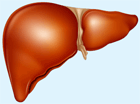 Welcome to the April issue of NRx (formerly known as Net Results Express). Through NRx you can read about ongoing research at our five research institutes, the Ontario Cancer Institute (OCI), the Toronto General Research Institute (TGRI), the Toronto Western Research Institute (TWRI), the Toronto Rehabilitation Institute (TRI) and the Techna Institute (Techna).
Welcome to the April issue of NRx (formerly known as Net Results Express). Through NRx you can read about ongoing research at our five research institutes, the Ontario Cancer Institute (OCI), the Toronto General Research Institute (TGRI), the Toronto Western Research Institute (TWRI), the Toronto Rehabilitation Institute (TRI) and the Techna Institute (Techna).
In this issue you can read about research in:
- The treatment of hepatitis C by targeting microRNA
- Symptom prevention in prostate disorders
- The mechanisms that control the death of retinal cells in the eye
- Motor control signals in Parkinsonís disease
- Preventing rejection of lung transplants using gene therapy
- Accurately assessing a patientís balance in physiotherapy
We hope that you will find NRx informative and helpful. If you have feedback or questions, please contact www@uhnresearch.ca.
Christopher J. Paige, PhD, FCAHS
Vice President, Research
University Health Network

The hepatitis C virus primarily infects the liver (above).
Approximately 170 million people worldwide are chronically infected with the hepatitis C virus (HCV). Chronic HCV infection is a major cause of liver cirrhosis, liver failure and liver cancer. Conventional anti-HCV therapies have lengthy treatment periods, usually between 24 to 48 weeks, and have considerable side effects. A clinical trial across several international sites, led by TGRI Senior Scientist Dr. Harry Janssen through his appointment at Erasmus Medical Center University Hospital, demonstrated the safe and effective use of a new anti-HCV drug, called miravirsen. It works by blocking microRNA-122, a molecule that is important for the replication of HCV in the liver.
Patients with chronic HCV infection were treated with miravirsen for five weeks and were monitored for 18 weeks after treatment. The trial found that patients safely tolerated the drug and that levels of HCV decreased in response to treatment, in some cases to the point of no detectable presence. Furthermore, the virus did not develop a resistance to the drug, a common occurrence and problem with many anti-HCV therapies.
This study is the first to prove that blocking microRNA can be effective in treating hepatitis C and is the first ever to demonstrate that blocking microRNA can be used as a treatment option in humans. Therefore, this trial is a landmark study for new therapeutic options in many other diseases where microRNAs play a role, such as in cardiovascular disease, cancer and metabolic disorders.
This work was supported by Santaris Pharma.
Treatment of HCV infection by targeting microRNA. Janssen HL, Reesink HW, Lawitz EJ, Zeuzem S, Rodriguez-Torres M, Patel K, van der Meer AJ, Patick AK, Chen A, Zhou Y, Persson R, King BD, Kauppinen S, Levin AA, Hodges MR. New England Journal of Medicine. 2013 March 27. [Pubmed abstract]

As the prostate gets larger in men as they age, the risk of developing BPH increases as well.
Benign prostatic hyperplasia (BPH) is an enlargement of the prostate that can cause lower urinary tract symptoms. These symptoms include bladder problems as well as frequent and urgent urination. However, many men do not display these symptoms despite having an enlarged prostate, a condition known as asymptomatic BPH. Although they do not display symptoms initially, asymptomatic BPH patients could develop them at a later date. OCI Clinician-Scientist Dr. Neil Fleshner examined the effect of dutasteride, a treatment for BPH that reduces the size of the prostate, in preventing the development and worsening of symptoms in asymptomatic BPH patients.
Asymptomatic men with BPH were treated with either dutasteride or a placebo and monitored over four years. Treatment with dutasteride was found to reduce the risk in developing symptoms by over 50% with minimal side effects. "This study is the first to demonstrate that dutasteride could be safely used as a preventive treatment for patients with an enlarged prostate and no symptoms," says Dr. Fleshner.
This work was supported by The Princess Margaret Cancer Foundation.
Effect of dutasteride on clinical progression of benign prostatic hyperplasia in asymptomatic men with enlarged prostate: a post-hoc analysis of the REDUCE study. Toren P, Margel D, Kulkarni G, Finelli A, Zlotta A, Fleshner N. British Medical Journal. 2013 April 15. [Pubmed abstract]

Retinitis pigmentosa is a degenerative eye disease that affects more than one in 3500 Canadians.
A study from TWRI Senior Scientist Dr. Rod Bremner has uncovered a novel mechanism that regulates cell death in the retina. The study assessed the function of a group of proteins known as E2fs in rods or cones, the retinal cells that detect light. Results showed that while one type of E2f protein (E2f1) controls rod death, another (E2f2) promotes cone death. Explains Dr. Bremner, "These findings will be important for the development of new therapies to treat patients with retinal damage due to a loss of rods or cones such as those with retinitis pigmentosa."
The results are also important as they highlight the possible role of E2fs in regulating retinoblastoma, a type of cancer. Retinoblastoma cells have features resembling cones, thus loss of E2f2 function might sustain cancer growth.
This work was supported by the Canadian Institutes of Health Research and the Foundation Fighting Blindness Canada.
E2f2 induces cone photoreceptor apoptosis independent of E2f1 and E2f3. Chen D, Chen Y, Forrest D, Bremner R. Cell Death and Differentiation. 2013 April 5. [Pubmed abstract]

Neural impulses generated in the motor cortex (highlighted region) control how movements are performed.
The symptoms of Parkinsonís disease (PD) include unwanted movements (tremors) combined with an inability to move (akinesia), suggesting that the fine balance between restraining and promoting movement is lost.
A non-invasive technique called transcranial magnetic stimulation (TMS) allows researchers to activate specific brain regions and is used to study the motor cortex of patients with PD. Thus, researchers have defined the inhibitory signals, which serve to prevent unwanted movement, and facilitatory signals, which drive movement. While the technique represents a powerful tool, contradictory results have been reported in patients with PD.
TWRI Senior Scientist Dr. Robert Chen believes that conflicting results may be due to a compensatory mechanism between signals. "In analyzing current findings, we noticed that cortical facilitation seemed to be cross-talking with inhibition in a complex manner," says Dr. Chen. Considering these observations, Dr. Chen and postdoctoral fellow Dr. Zhen Ni established rigorous TMS protocols and analyses to show that patients with PD had consistently higher facilitation, accompanied by decreased inhibition. These results suggest that the balance between facilitation and inhibition is disrupted in PD, providing new insight into how normal motor control might be restored.
This work was supported by the Canadian Institutes of Health Research.
Increased motor cortical facilitation and decreased inhibition in Parkinson disease. Ni Z, Bahl N, Gunraj CA, Mazzella F, Chen R. Neurology. 2013 April 10. [Pubmed abstract]

Acute rejection in a lung transplant biopsy is determined by examining the transplanted tissue under a microscope (above).
Long-term survival after lung transplantation remains severely limited, primarily due to a post-transplant immune response that leads to chronic rejection and a consequent obstruction of the airways of the lungs.
Previously, TGRI Senior Scientists Drs. Shaf Keshavjee and Mingyao Liu and OCI Senior Scientist Dr. Jeffrey Medin demonstrated in an experimental tracheal transplantation model that interleukin(IL)-10—an anti-inflammatory protein—gene therapy after transplant could significantly reduce the obstruction of lung airways. While promising, the mechanism underlying this protective effect is still unknown. A more recent study from these researchers has shed light on this mystery.
Using an experimental lung transplantation model, they demonstrated that the transplanted lungs treated with IL-10 gene therapy showed reduced signs of acute rejection as determined through pathological examination. "IL-10 also significantly reduced the expression of genes associated with chronic inflammation and destructive tissue damage after transplantation," adds Dr. Keshavjee. "This demonstrates IL-10 gene therapyís beneficial effect on the immune response in this model and is a promising avenue in designing new strategies to prevent rejection after lung transplantation."
This work was supported by Cystic Fibrosis Canada.
Lentivirus IL-10 gene therapy down-regulates IL-17 and attenuates mouse orthotopic lung allograft rejection. Hirayama S, Sato M, Loisel-Meyer S, Matsuda Y, Oishi H, Guan Z, Saito T, Yeung J, Cypel M, Hwang DM, Medin JA, Liu M, Keshavjee S. American Journal of Transplantation. 2013 April 19. [Pubmed abstract]

Improving clinical balance evaluation will help therapists provide customized exercise programs to help patients maximize mobility and avoid falls.
Being able to stand and walk without falling is important for daily activities, yet balance impairment is common, particularly in the elderly. Physiotherapists need to accurately assess a patientís balance to develop individualized treatment plans and evaluate the change over time. There are many ways to assess balance, including several standardized tests. TRI Senior Scientist Dr. Susan Jaglal recently surveyed 369 Ontario physiotherapists to determine their perception of these measures.
Over 90% of physiotherapists responding to the survey agreed that measuring the degree of impairment and closely tracking changes in balance were important for patient care, but less than 50% indicated that existing standardized measures met their needs. In fact, 80% reported that they wanted to improve balance assessment. Dr. Jaglal comments on the study, saying "This survey illustrates the recognition among physiotherapists that there are gaps in the existing assessments of balance abilities, an important area of their practice." Demonstrating that therapists want to improve their ability to evaluate balance reinforces the need for continued efforts to optimize clinical balance assessment.
This work was supported by the Ministry of Health and Long-Term Care in Ontario and the Toronto Rehabilitation Institute Chair in Rehabilitation Research. Dr. Straus is a Tier 1 Canada Research Chair in Knowledge Translation and Quality of Care.
Clinical balance assessment: perceptions of commonly-used standardized measures and current practices among physiotherapists in Ontario, Canada. Sibley KM, Straus SE, Inness EL, Salbach NM, Jaglal SB. Implementation Science. 2013 March 20. [Pubmed abstract]
 TWRI Senior Scientist Dr.
TWRI Senior Scientist Dr.